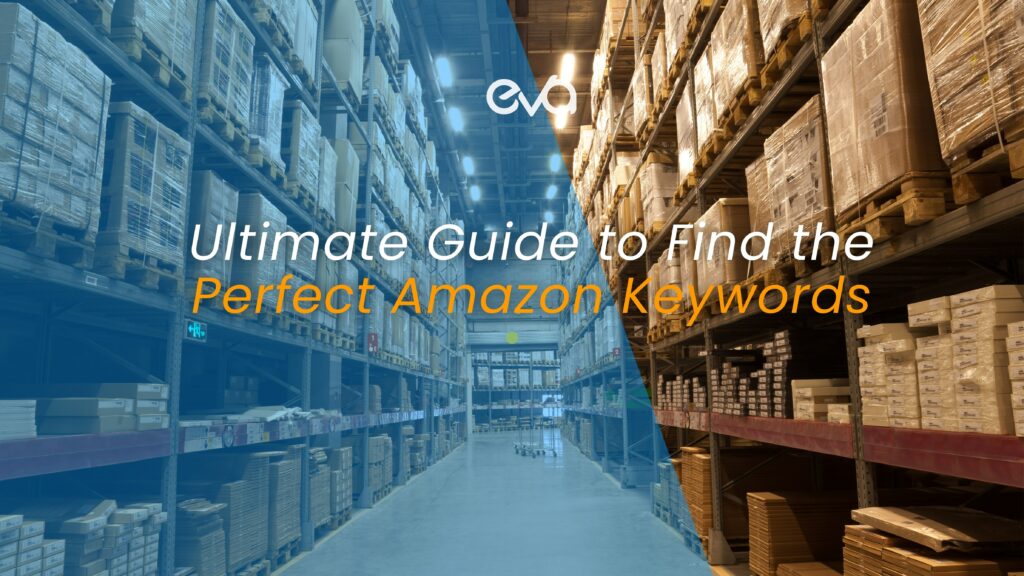Are you tired of dealing with old inventory on Amazon? We know how frustrating it can be to have products just sitting on the shelves, taking up valuable space and not selling. But don’t worry, I’ve got you covered! In this blog post, I will dive into the problem of old inventory on Amazon, the importance of preventing it, and share with you some powerful strategies to avoid it altogether.
Whether you’re an established seller or just starting out, I will share tips will help you stay ahead of the game and keep your inventory fresh and profitable. So buckle up and get ready for some game-changing insights!
Table of Contents
Understanding the Causes of Old Inventory on Amazon
1. Poor Product Research
Launching a product without adequate research can lead to oversaturation in the market, resulting in slow sales and an accumulation of old inventory. For example, if a seller launches a product without considering the competition or demand, they may find that their product isn’t selling as well as they anticipated, resulting in old inventory.
2. Ineffective Pricing Strategy
Setting too high or too low prices can negatively impact sales and lead to old inventory buildup. For example, setting a price that is too high may deter customers from purchasing, while setting a price that is too low may lead customers to believe that the product is low-quality. In both cases, slow sales and old inventory can result.
3. Lack of Promotional Activities
Failing to run promotions or advertise products can result in low visibility and a lack of customer interest, contributing to old inventory. For example, not running deals or discounts during holiday seasons or not advertising products on social media or email marketing can lead to low sales and old inventory.
4. Inefficient Inventory Management
Poor inventory management, including incorrect forecasting and not monitoring stock levels, can lead to old inventory buildup. For example, if a seller overestimates demand and orders too much stock, they may find themselves with excess inventory that doesn’t sell.
5. Limited Sales Channels
Failing to diversify sales channels and relying solely on Amazon can limit customer reach and result in slow sales. For example, if a seller only sells on Amazon and not on their own website or other marketplaces, they may miss out on potential customers who don’t shop on Amazon.
6. Inadequate Product Descriptions and Images
Poor product listings that don’t accurately describe the product or feature low-quality images can lead to low customer interest and slow sales, resulting in old inventory buildup. For example, if a seller uses generic product descriptions and low-quality images, customers may not be able to see the product’s value and may not be interested in purchasing it.
How Amazon’s Inventory Management System Works
Amazon’s inventory management system is a sophisticated process designed to ensure sellers have the right amount of inventory at the right time. The system is based on a “just in time” approach, which means that Amazon strives to keep inventory levels low and replenish stock as soon as it runs out.
When a seller lists a product on Amazon, the system tracks the stock levels and updates them in real-time. This allows the seller to keep track of how much inventory they have, how much has been sold, and when they need to reorder.
Amazon also offers its own fulfillment service, called Fulfillment by Amazon (FBA), which allows sellers to store their inventory in Amazon’s warehouses. With FBA, Amazon takes care of the picking, packing, and shipping of the products and handles customer service and returns. That makes inventory management much easier for sellers, as they don’t have to worry about storing and shipping their own products.
Additionally, Amazon provides sellers with tools to help them manage their inventory effectively. That includes tools to monitor sales velocity, analyze inventory levels, and forecast demand. By using these tools, you can ensure they have the right amount of inventory at all times, reducing the risk of old inventory buildup.
How Long It Takes for Products To Become Old Inventory
The time it takes for Amazon products to become old can vary depending on the product and its category. Generally, Amazon considers products as “old” when they have been in the warehouse for six months or longer without generating any sales.
However, this timeframe can be shorter for certain categories, such as electronics, where products may quickly become outdated and lose value over time. In contrast, products such as books or clothing may have a longer lifespan and remain relevant for a longer period.
It is crucial for sellers to keep an eye on their inventory levels and monitor sales data regularly to avoid old inventory buildup. By doing so, sellers can identify slow-moving products and take necessary actions to prevent them from becoming old. These actions may include running promotions, adjusting prices, or removing the products altogether.
Here is a table outlining the general lifespan for 10 main product categories on Amazon:
| Product Category | General Lifespan of Products on Amazon |
| Electronics | 6 months – 1 year |
| Clothing | 6 months – 2 years |
| Beauty & Personal Care | 6 months – 2 years |
| Home & Kitchen | 6 months – 2 years |
| Sports & Outdoors | 1 year – 3 years |
| Toys & Games | 6 months – 3 years |
| Books | 1 year – 5 years |
| Health & Household | 6 months – 2 years |
| Office Products | 1 year – 3 years |
| Automotive | 1 year – 3 years |
6 Proven Strategies to Prevent Old Inventory on Amazon
1: Conducting Market Research Before Launching a Product
Before launching a product on Amazon, it is essential to conduct thorough market research to evaluate demand, competition, and potential sales opportunities.
That includes conducting keyword research, analyzing customer reviews, and checking out the competition. This information can help sellers determine whether the product is a viable option and if there is a need for it in the market.
For example, if a seller is considering launching a new line of skin care products on Amazon, they can conduct market research to evaluate the competition and demand. They can research customer reviews of similar products, analyze keyword search trends, and evaluate the pricing and positioning of competing products. Based on this research, the seller can determine whether there is a need for the product in the market and set a competitive price to attract customers.
2: Setting Competitive Prices
Setting competitive prices can help attract customers and increase sales, but it is crucial to avoid setting prices too high or too low. Setting prices too high can deter customers, while setting too low can lower the product’s perceived value and negatively impact sales.
For example, if a seller offers a new line of yoga mats on Amazon, they can research the prices of similar products on Amazon and set a competitive price based on that research. They can also offer promotions and deals, such as free shipping or discounts, to entice customers to purchase.
3: Offering Promotions and Deals
Running promotions and offering deals can generate interest and boost sales for a product. This includes discounts, buy-one-get-one offers, and other incentives to entice customers to purchase.
For example, if a seller has a slow-moving product on Amazon, they can run a promotion, such as a limited-time discount, to generate interest and boost sales. They can also offer deals such as free shipping or a gift with purchase to encourage customers to buy.
4: Amazon’s FBA (Fulfillment by Amazon)
Amazon’s FBA service can help sellers manage their inventory more efficiently and reduce the risk of old inventory buildup. FBA handles storage, packaging, and shipping, allowing sellers to focus on other aspects of their business.
For example, if a seller sells a large volume of products on Amazon, using FBA can help them manage their inventory more efficiently and avoid old inventory buildup. FBA handles the storage and shipping of products, ensuring that they are delivered to customers on time.
5. Optimizing Product Listings
Optimizing product listings with clear and informative descriptions, high-quality images, and relevant keywords can help attract customers and increase sales. Therefore, it is essential to keep product listings up-to-date and make necessary adjustments to optimize them for customer engagement.
For example, suppose a seller is selling a new line of organic skincare products on Amazon. In that case, they can optimize their product listings by including high-quality images, clear and informative descriptions, and relevant keywords. They can also include customer reviews and ratings to increase customer trust and confidence in the product.
6. Monitoring Inventory Levels and Sales Data Regularly
Monitoring inventory levels and sales data regularly can help sellers identify slow-moving products and take necessary actions to prevent them from becoming old inventory. That includes adjusting prices, running promotions, or removing products altogether.
For example, if a seller notices that a product is not selling as well as expected, they can adjust the price, run a promotion, or remove the product altogether to prevent it from becoming old inventory. By monitoring inventory levels and sales data regularly, sellers can proactively prevent old inventory buildup and maintain a healthy sales pipeline.
How to Deal with Old Amazon Inventory
When sellers have old inventory on Amazon, it can be a significant concern for their business. Sometimes, sellers may have products that are not selling, are outdated or have become less popular. This can lead to financial losses and waste valuable warehouse space. Here are some additional details and examples on how to deal with old Amazon inventory.
Review Your Inventory Management Strategy
Analyzing your sales data regularly is crucial to identify slow-moving products and adjusting your inventory management strategy accordingly. You can track metrics such as inventory turnover rate, sell-through rate, and days of inventory on hand to better understand your inventory performance. This way, you can identify products that are not selling well and take action to prevent them from becoming old.
For instance, if you notice a particular product category is not selling well, you can consider liquidating the inventory or running a promotional campaign to boost sales. Similarly, if a particular product has not sold in a while, consider reducing the price to increase customer interest.
Check Amazon’s Policies and Fees
Amazon charges a long-term storage fee for products in the warehouse for more than 365 days, and sellers can be charged additional fees to dispose or remove old inventory. It’s essential to be aware of these policies and fees to avoid unexpected costs. Sellers can use Amazon’s Inventory Age Report to monitor the age of their inventory and take action before the long-term storage fees kick in.
Explore Options for Liquidation
If your old inventory is not selling or is unlikely to sell, consider liquidating it through discounted sales to other retailers, wholesalers, or liquidation companies. For instance, Amazon has a program called Amazon Outlet, which allows sellers to sell overstocked or slow-moving products at discounted prices to Amazon customers.
Similarly, several software solutions specialize in helping you liquidate your old Amazon inventory. For instance, Eva offers pricing settings to adjust the price with sales velocities, such as MAP pricing, Scheduled Pricing, and so much more.
Donate or Dispose of Old Inventory
If you are unable to sell or liquidate old inventory, consider donating it to charitable organizations or nonprofit groups. Donating old inventory helps those in need and provides tax benefits for the seller. Alternatively, you can dispose of old inventory responsibly to avoid environmental harm.
Conclusion
Dealing with old inventory on Amazon can be a daunting challenge, but minimizing its impact on your business is possible with the right strategy and tools. From regularly reviewing your inventory management practices to exploring liquidation options and donating or disposing of old inventory responsibly, taking proactive steps can help you stay on top of your inventory and maintain a healthy sales pipeline.
If you need help with managing your Amazon inventory, consider getting a free consultation with Eva’s inventory management software. Eva can help you track your inventory, monitor sales data, and optimize your inventory management strategy to prevent old inventory from becoming a problem.
Don’t let old inventory weigh down your business. Contact Eva today and make old inventory history!








